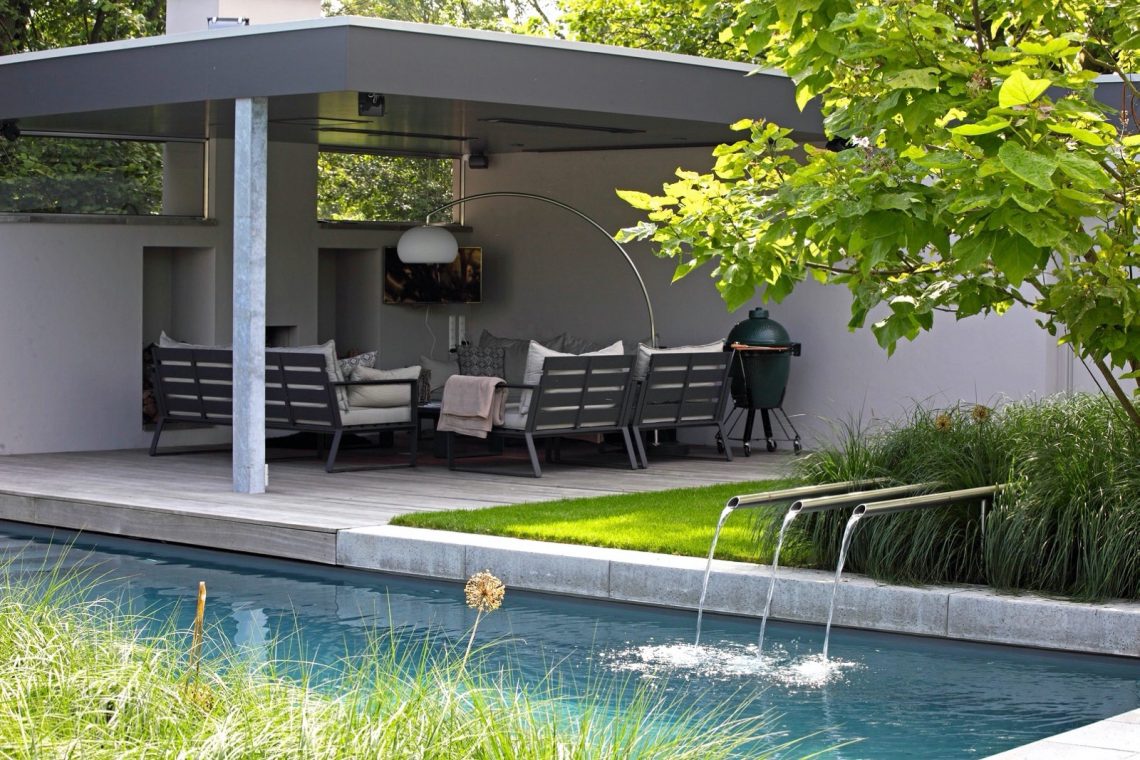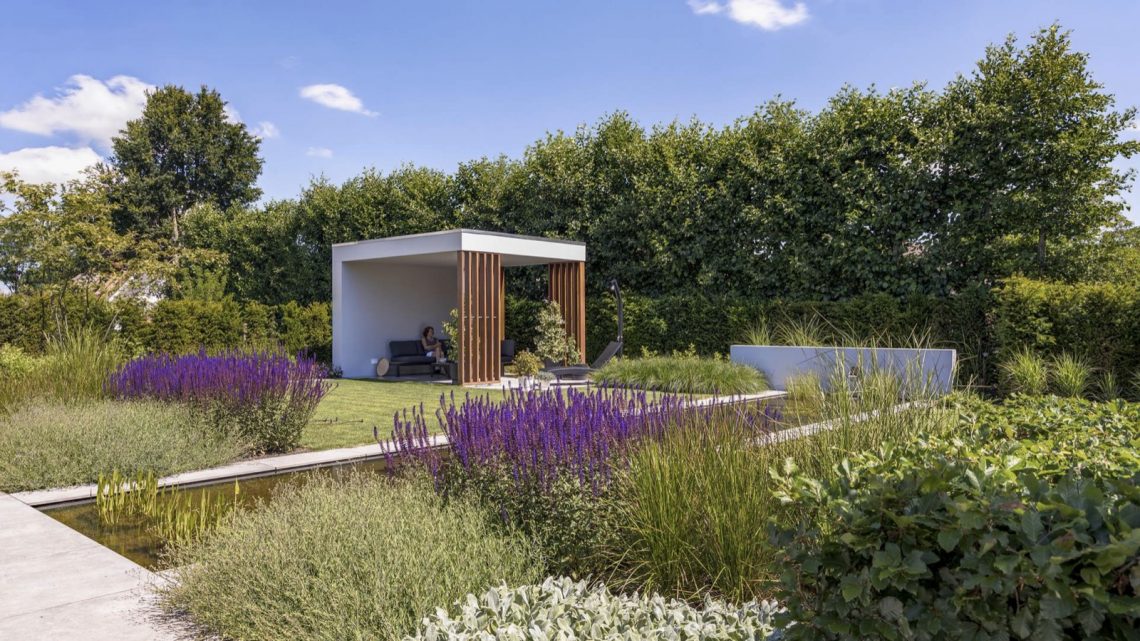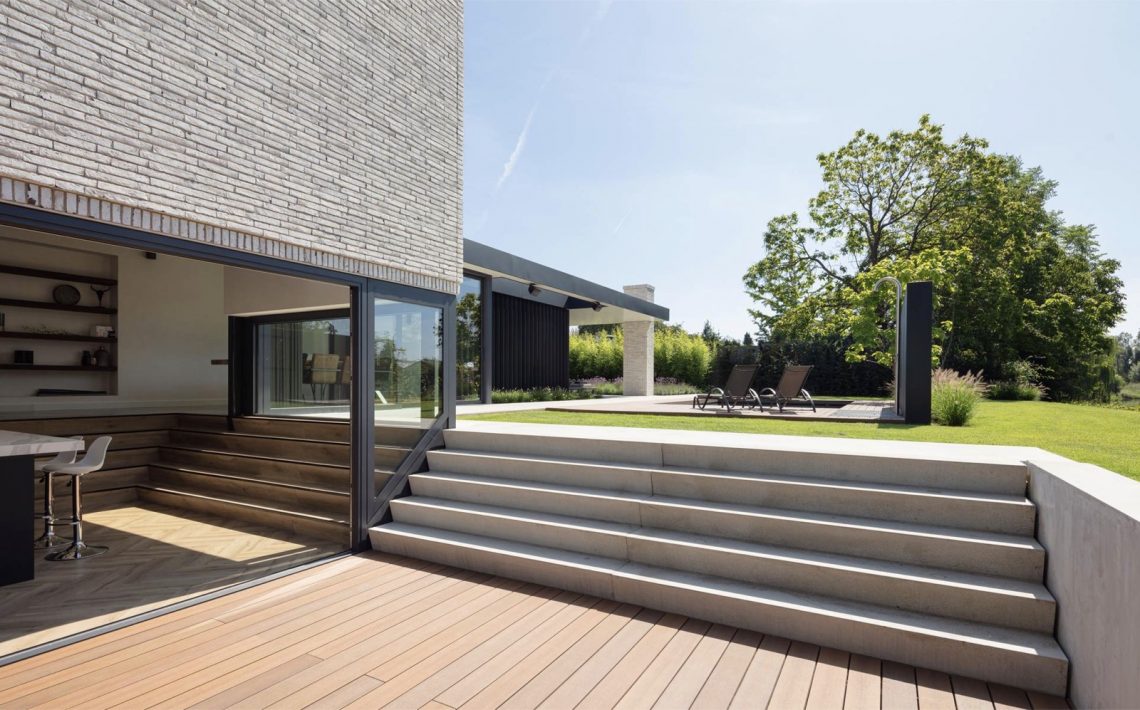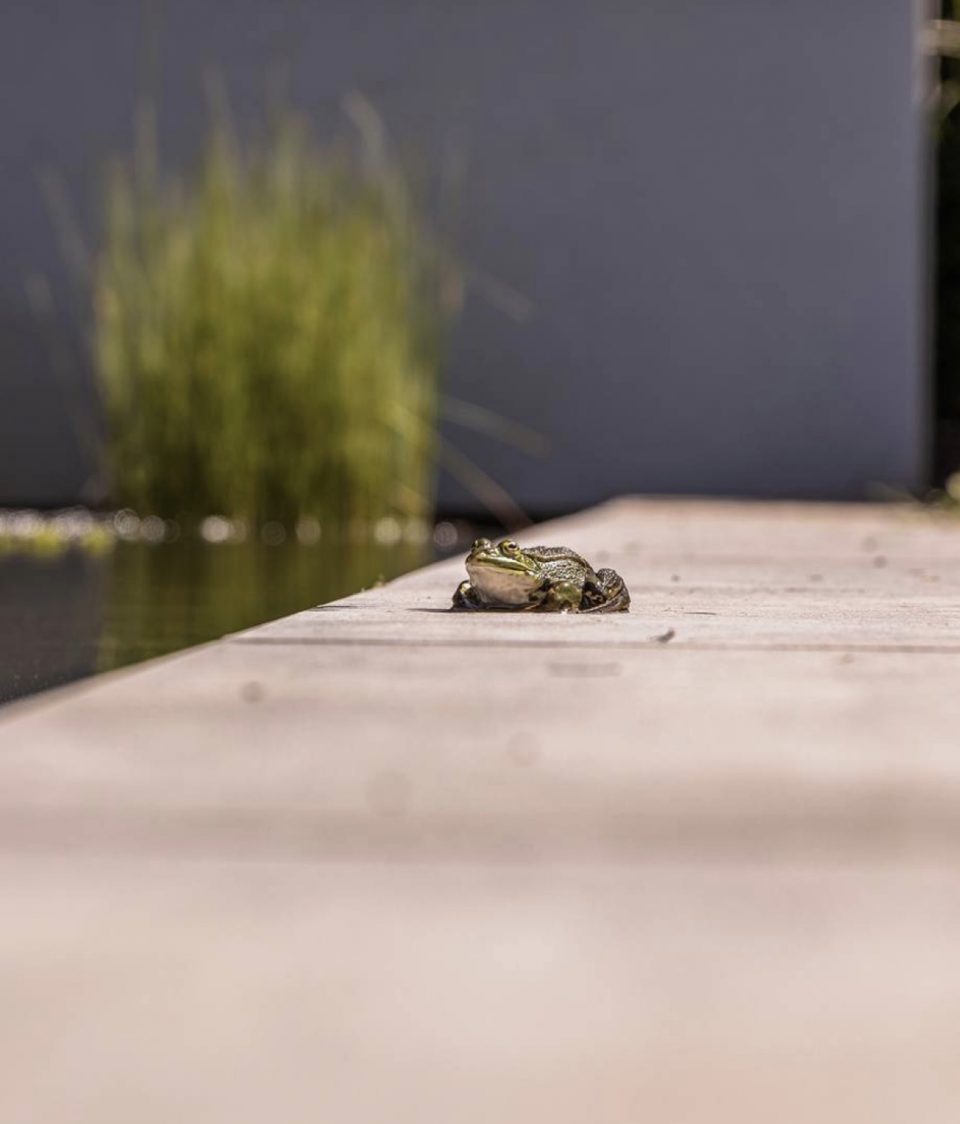Sustainability in the modern garden

Sustainability is a topic of increasing importance in recent years. And that sustainability has also become a factor in the design of gardens. For example, there is the Steenbreek foundation, which works to green the living environment. Sustainability long sat in the corner of “woolly socks. But do sustainability and landscaping a modern new sleek garden go together?
The answer to this question is a resounding yes! Sustainability and a modern comfortable garden can go well together. I will explain that here through some examples.
Balance in the garden
You probably know the picture: a completely paved garden with a few containers in which plants try to survive. Under the guise of low maintenance and sleek design, many gardens are laid out this way. The balance is then far off. Too many stones and not enough greenery.
In the design of a garden, it is important to have a good balance of hard (stone) and soft (green) materials. It has been scientifically proven that living in a green environment increases feelings of happiness and thus combats depression. So it is important to have enough greenery in a garden. And having enough planting beds, lawns, trees and hedges in a garden automatically counteracts petrification.

Balance in the garden: a good relationship between the stone terraces and greenery
Largely paved gardens drain rainwater through a manhole or gutter to the sewer system. Driveways in particular represent a lot of surface area and put a lot of pressure on our sewer system. If there is the right balance of hard and soft materials, rainwater harvesting is not a problem. Instead of gutters or manholes, terraces can drain onto a border or into a surface of semi-paving. The rainwater then stays in the home garden and combats dehydration. During a heavy rainstorm, the garden drainage then does not create additional pressure on our sewer system. Instead of an entirely paved patio, a seating area made of grit or gravel can be chosen. A driveway or parking space can also be made of gravel or grit just fine. The advantage of drainage is obvious; another is that you can grow a tree or other plants in such a terrace.

Semi-paving: loose plants and trees grow freely in the terrace of gravel
A deck can also be made of wood or composite wood. Not only does this look natural, but it also allows rainwater to infiltrate between the planks. Do note the origin of the wood used. In our gardens, we use only wood with the appropriate labels. Or, for example, a composite material in which waste from the wood industry is used or based on bamboo.

This decking terrace is made of composite planks of 94% recycled material
No garden without a tree
That seems to be a statement that cannot always be true. But even for a small garden a suitable tree can be found.With some daring we also regularly put trees close to the facade. Then enjoy it all year long! Choosing the right species and growth form is of course important here, but there is so much choice. With a tree close to your home, you literally draw the natural close as well. You will see plenty of birds come to bivouac in the tree close to your living room or kitchen both summer and winter. And in the process, the experience of your garden only increases.

Always a tree: this Parrottia is close to the facade, a beauty!
Green walls
To create privacy, many people reach for the most obvious solution: the fence. Especially in new housing developments, we often see a succession of standard screens between concrete posts. Instant results, but not always pretty, and it also adds nothing in terms of sustainability. In fact, a fence made of impressed wood is even bad for the environment!
But it can also be green. Many yard fences in our gardens are green. Ranging from fencing with ivy to thick hedges of Fagus, Carpinus and Yew. There is a tremendous amount of life in hedges, from small insects to all kinds of birds like tits, robins and sparrows. Invest in some quality hedge plants instead of a fence. A good hedge provides adequate privacy and lasts a lifetime. Maintenance is not too bad, pruning most hedges twice a year.

A green wall, in this case of Carpinus. A trellis is ‘hidden’ in the hedge
Lots of greenery: cover the fragile soil
Black soil is a thing of the past in the modern garden. So no loose plants with raked soil in between. This only dries out the visible soil too much. Good ground cover is a veritable walhalla for insects and all sorts of small soil life. It provides additional shelter and is a source of food. The covered soil has a much better microclimate and moisture management.

Lots of green: a colorful border with lots of biodiversity
Important, of course, is also proper tillage and fertilization of the soil. No fertilizer is used in our gardens, only organic matter in various forms. Not only is the nutritional value considered, but also the structure of the soil. Heavy clay soil is atrophied, while poor sandy soil is enriched. It is also important that there are sufficient microorganisms in the soil. Scary critters, but very important!
And when all that is in order, the planting can grow and flourish to its fullest. A good healthy planting can take a beating. And it shows in the rich blooms, healthy growth and the many animals that find a home in our gardens.

A healthy garden naturally attracts lots of animal life.
Of course, the above story is not yet complete. In our operations, there is plenty of focus on electrifying our vehicle fleet and other machinery and tools. We already generate much of our own electricity through the solar panels on the roof of our shed. Waste streams are separated, no use of toxins, reuse of old materials, and so on. And, of course, there remain plenty of areas to improve. So this story will definitely be continued in the future!
Author: Gert-Jan Schouwenaar, landscaper at Sparq Gardens
View Sparq Gardens’ projects here
Back to blog



